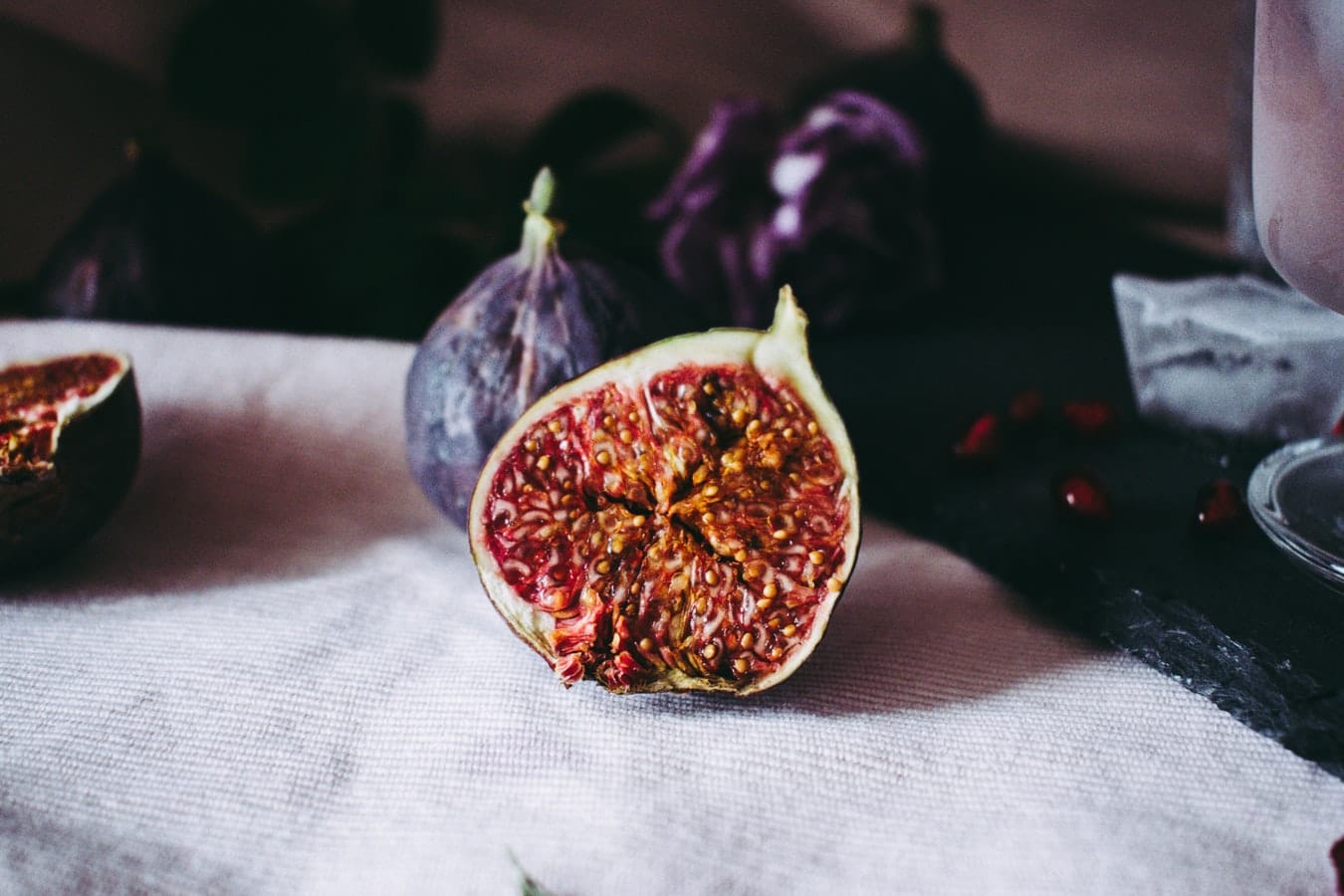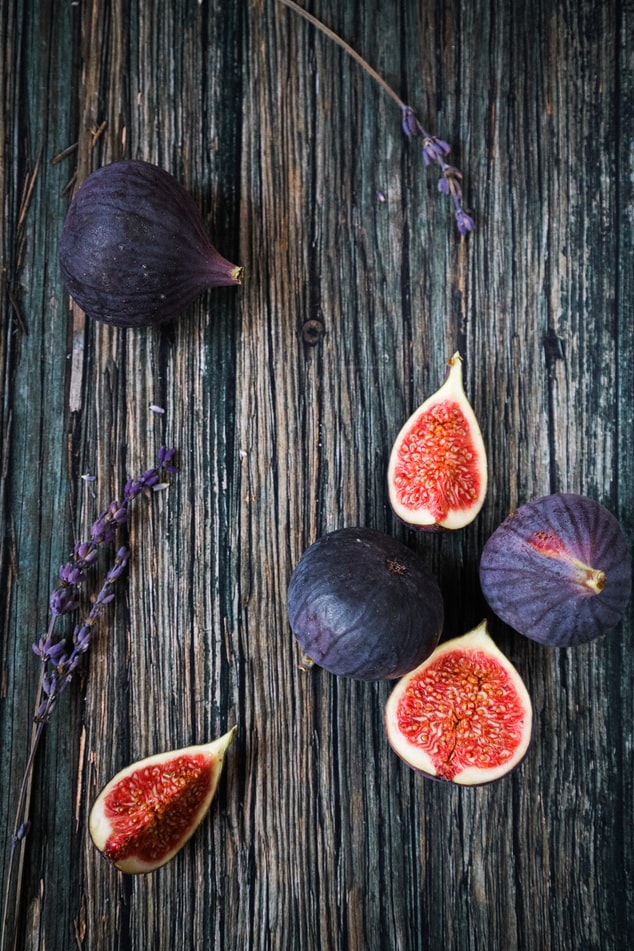Dried figs used to be quite a rare delicacy not so long ago, but today this natural sweetie has won the hearts of many of us. To some, it may seem slightly unusual in terms of taste, but most of us like adding some dehydrated figs to porridge in the morning or as a topping on muesli or yogurt.
Naturally, there comes the question: how much time can this foodstuff stay edible? Can you maybe even freeze figs? We thought it might be interesting for you to learn more about it.
How Much Time Will Dried Figs Last?
The lifespan of this sort of fruit is highly dependant on the storage conditions, but dry figs are long-livers, just like any other dehydrated foods, and can keep their quality for several months easily.
Figs are extremely delicate fruits though! When being freshly picked, ripe figs are very tender and prone to spoilage if kept in the wrong way. If we leave them in a place where they will be exposed to constant bright light or excessive warmth, these fruits will degrade in less than a week.
Since they are picked and sold being fully ripe, it becomes clear why most of us prefer the dry alternative over fresh figs. For the same reason, fresh fruits are better to be stored in a canned or dried state or consumed instantly after being purchased.
But what about the dry counterpart? Is it the same difficult to cope with? Fortunately, it is not! After being dehydrated, figs become way more durable and long-lasting, and can easily remain delicious and edible for many months. How long does dried fig fruit last exactly? Well, it all hangs upon how properly we store them, of course, but if all the requirements are followed precisely, then these dry yummies will be able to please us for nearly a year!
To better see the distinctions in storage terms of different types of figs, we have prepared a comparative chart that might be useful to keep at hand all the time in your kitchen.
[table id=98 /]
But even if dried fruits are so durable, it does not mean we can carelessly abandon them without any care! Keep dry figs tightly sealed in their native package or, if needed, transfer them to the resealable packet or tank for keeping.
And of course, ensure they are kept in a shaded place like your kitchen cabinet where the light and heat can’t get to them. Like that, you will easily manage to prolong their lifespan to its longest and preserve their taste and quality.
Can Dry Figs Go Bad?

For sure, when it comes to food storage, any prudent housewife, as well as any person who truly cares for what he or she eats, wonders whether this or that foodstuff can be spoiled, and how to avoid that.
And you might be very surprised, but dry figs are not the exception! We used to think that only fresh goodies can get bad and rot and that when dehydrated, they will surely skip this fate, but this is not always like that.
Dehydrated figs are the same vulnerable and tend to degrade with time, especially if we fail to keep them properly under the correct conditions.
But how to tell if they are still fine or we’d better toss them away for good? Well, fortunately, the scheme is basically the same as for any other foodstuff in such a case:
- examine the fruits for any traces of mold. If you find some, throw those ones in the trash bin!
- if the figs smell not like usual or they badly stink already, get rid of them immediately. There is nothing to save there.
- any changes in color and/or weird marks like dark dots on the fruits’ surface may be the signs of upcoming spoilage. What to do with bad figs in this case? We guess the answer is obvious.
However, note that dry figs can develop whitish crystals on their surface that are absolutely normal: those are natural sugars that just come out on the fruit surface. So if you see something like that, don’t panic! Your figs are completely fine.
How to Store Figs
Since these fruits are so sensitive and delicate, it may seem that storing them is a tricky thing. At some point, it is true, especially if they are fresh, but learning how to deal with them both raw and dry will not take much time.
How to cope with fresh ripe figs
When being fresh, they do need a lot of care and attention because spoilage can arrive really quickly. And yes, several handy tips are better to be taken into account.
- If you will surely consume the figs in two or three days, feel free to leave them on the counter. Simply keep the ripe fruits on a plate covered with the paper napkin, and remember they must stay away from heat and light!
Also, never place fresh figs on top of each other. They are too soft and can get smashed easily which will cause the development of spoilage way quicker.
- In case the figs will not be consumed that fast, or they already spent more than three days on the counter, it is better to refrigerate them. When exposed to frost, these fruits will last for nearly seven days.
- If you are not sure that refrigeration will help, try to preserve figs by canning them. It will take more time since you will have to sterilize the jars, prepare, and simmer the figs for three hours, and then pour the syrupy fig stuff into the tanks.
On the other hand, it’s definitely worth trying since canned fruits will remain edible for eighteen months if unopened.

As for the dehydrated yummies, they can, either way, go to the fridge, pantry, or remain left on the counter. No matter what you will choose to do, make sure the figs are sealed in the airtight tank or at least in a plastic packet that is tightly sealed.
The dried kind, however, also must be kept away from humidity, in a cool and shaded spot.
If everything is done right, your delicious sweeties will be OK for 6-12 months in a pantry and for about a year if refrigerated. But if you decide to freeze them, then the lifespan will extend to 1.5 years.
Freezing Figs. Things to Consider When Dealing With Fresh And Dry Fruits
Since we already mentioned that figs can be frozen both ripe and dry, it is time to explain how to actually freeze figs at home and how to prepare figs for freezing.
- When you freeze fresh figs, you want them to stay dry since moisture may develop into rotting later even in a cold surrounding. Start with thoroughly washing and drying them, then chop off the stems, and put aside the overripe ones. Now place the fruits on a baking sheet covered with parchment so that there is some space between each piece, and place that into the frosting camera for approximately four hours. Afterward, take the yummies out, transfer to the sealable plastic packet, squeeze out the air, and voila, your figs are ready to go to the freezer! This is the simplest way how to freeze fresh figs yourself.
- To freeze the dried fig fruits, not much needs to be done. Simply make sure the fruits are not stuck to each other since then they will be impossible to separate when frozen and place them in a frost-resistant packet.
Seal properly, remove the excess air, and keep flat in the freezing camera so that the figs won’t turn into a frozen icy fig ball!
Such a frosty approach is good if you have really tons of figs left and you’ll definitely not finish them in time.
What to Do With Fresh Figs
This is a common question among those who never tried this fruit before, especially in its raw state. Another popular inquiry is “Can you eat fig skin?”. Well, let’s figure this all out.
Starting from the end, the fig skin is edible. There’s no need to peel the fresh fruit prior to eating it. The only reason why someone might do that is when one doesn’t like eating fruits’ skin at all.
As for how to eat fresh fig, it’s simple: just enjoy it fresh as it is. The whole fruit is edible, even the seeds. However, this fruit can complement various dishes, too.
- For instance, raw figs match ideally with fruity salads
- They can be served with ice cream or other creamy desserts
- Go for the raw figs to decorate cakes, muffins, and pies
- Some even put cut figs on top of sandwiches. M-m-m, especially good with cheese! And why not?
- Raw figs can even be served with meaty dishes on the side (e.g. in a tomato-pepper salad to accompany the roasted beef or chicken)!

And if you wonder how to cook figs, there’s a piece of really good news. This fruit is super easy to prepare! It can be baked, roasted, and of course, eaten raw. But no special cooking skills are needed to enjoy this delicious yummy.
As for how to eat dried figs, various ways exist. Enjoy them as they are or add to desserts (only remember to soften them first by rinsing in hot water, it will make their texture more delicate). Also, dehydrated figs taste awesome with crushed nuts and other dried fruits and berries when blended as a paste with spoonful honey.
Are Figs Good For You?
If there was a contest for the title of the healthiest fruit, figs would definitely win “the best of the dried fruit” prize. They have a very positive effect on our guts making them work like a clock. Also, when including this fruit into our daily meals, we can be sure that we won’t get obese since figs are stuffed with useful fiber which keeps hunger on the leash.
And let’s not forget about calcium. To have adamant-strong bones and healthy teeth, figs must become your staple.
Now you know how to eat fig fruit and what to do with dried figs that turned bad. And also, we hope it’s clear now that, even despite this foodstuff’s delicate nature, it’s worth having on your table as often as possible.
[wp-faq-schema title=”Frequently Asked Questions”]

Can dried figs be eaten during pregnancy? Will they not harm the fetus or cause any other problems?
Well, why not? I heard they are very good for digestion, especially for pregnant women, and figs can prevent constipation (another problem of ladies expecting a baby). If you eat them moderately, I guess that’s fine. But anyway, it’s always better to ask your doctor if not sure.
Can dried figs cause diarrhea if one eats too much? My kid loves them but he can literally eat tons of dry sweet figs! I’m always worried it can harm him somehow.
Yep, that’s possible. Dry figs are pretty high in fiber which can indeed cause some stool issues.
Hi everyone! I’ve got a slightly weird question. Can dried figs cause gas? I really like eating them but I recently was told they can have that side effect. Is that true? Because I never experienced anything like that.
Hey! I never heard of such a side effect, too. I know that overeating figs can cause certain issues with stomach and stool, but not the one you mentioned. Anyway, if you never had problems, then there’s nothing to worry about, right?